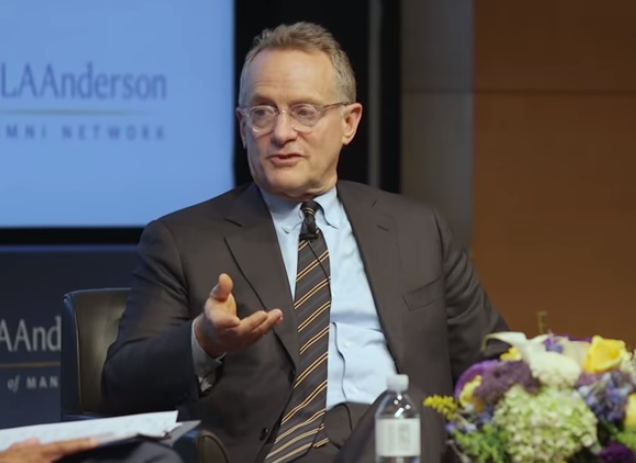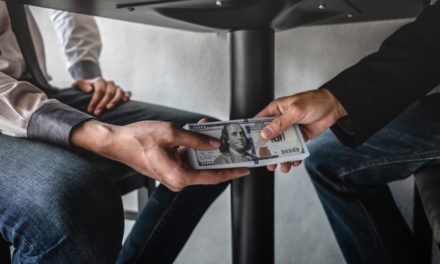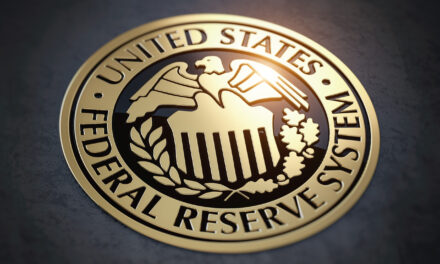Oaktree Capital CEO Howard Marks released his latest memo — which Warren Buffett says are “the first thing I open and read” — and in it he discusses the mysteries of negative interest rates, which could be coming soon to a Federal Reserve system near you, America.
“So I don’t think current conditions in the U.S. call for negative rates. But that doesn’t rule them out.”
Europe and Japan already have negative rates, and U.S. President Donald Trump has been calling for them in the states.
“Give me some of that. Give me some of that money. I want some of that money,” Trump proclaimed last week when talking about taking out a loan with a negative rate on it.
Marks, whose latest memo, called “Mysterious” — because that’s what negative rates to him — said they are no less mysterious than what causes rapid inflation or how it can be stopped.
To sum up his first introduction to negative rates, Marks relayed a conversation he had in 2014 when making an investment in Spain. Marks had the following conversation with his Spanish lawyer:
Carlos: The money has arrived. What should I do with it between now and Monday?
HM: Put it in the bank.
Carlos: You know that means you’ll get less out on Monday than you put in today.
HM: Okay, then don’t put it in the bank.
Carlos: You have to put it in the bank.
HM: So put it in the bank.
That’s negative rates, in a nutshell, Marks wrote. And the lesson learned is that money (substantial sums that you can’t just stick under a mattress or in your wallet) can’t be free-floating in space and in the world of negative rates, that requirement makes things a lot more complicated.
So in Europe, then and still now, when you put money in the bank, you get less out than you put in.
Our current interest-rate dynamic now comes from how things played out then in Europe. Per Barron’s:
The current interest-rate dynamic stems from how the global financial crisis played out in Europe. A debt crisis of peripheral nations and rapidly rising commodity and raw material prices caused the European Central Bank to charge banks keeping accounts with it—instead of paying them interest, in an effort to push them to lend more money. And those negative interest rates spread to European and Japanese government bonds.
Crazy as it sounds, you might actually buy a negative-yielding bond and guarantee yourself a loss at maturity if rates still decline further (becoming even more negative), or a bout of deflation causes your investment to rise in real terms, or if the currency appreciates by a greater rate than the negative interest rate.
When negative rates exist, investors, companies, and banks alike have to manage their money differently. Negative rates push investors into riskier assets with higher yields. They also pressure retirees living off income from their assets.
Another strange side-effect is that people end up paying bills sooner because holding onto the money does them absolutely no good. Businesses also don’t move to collect receivables quickly because holding onto the money … costs money, which may “have a contractionary effect rather than a stimulative effect,” Marks notes.
Instead of spending and borrowing, people save, and unlike cash hoarding big businesses, small savers have been spared the negative rates so far.
But here’s the kicker: wealth inequality, which is already a major problem in the U.S.
According to Marks, a run-up in asset prices (which happens when a central bank has low rates) will mostly benefit only the rich, who have the most money in stocks and other assets.
So, in effect, negative rates would likely make already abysmal wealth inequality in the U.S. even worse.
And if a bank issues a mortgage and ends up having to pay the borrower, that discourages lending. And if negative rates hit the smaller savers, they might not put their cash in the bank, robbing it of its primary source of cash in the first place.
So what should you do if negative rates hit the U.S.?
According to Marks, you might stash away your cash and valuables in a safe-deposit box, which would be cheaper than putting it in a bank. Or you could move to higher-risk, higher-yield stocks, which many investors are already doing.
Will the U.S. ultimately see negative rates? According to Marks, he — nor anyone else — really knows at this point.
“When something hasn’t happened in the past, it’s impossible to be sure you know how it’ll end up.Different people will express opinions on this subject with differing degrees of confidence. Yet I remain certain that none of them ‘know,” Marks wrote.
“If I had to take a guess — and that’s all it would be — I’d say interest rates won’t go negative in the U.S. in the current cycle. If we go back to the possible reasons for them listed on page four, I think we’ll conclude that the factors at play in the U.S. make negative rates less likely:
- Stronger current economic growth
- Better growth prospects
- Thus no need for emergency measures
- Higher inflation expectations (especially given the tightness of the labor supply)
- Less pessimism
- Better uses for long-term capital
“So I don’t think current conditions in the U.S. call for negative rates. But that doesn’t rule them out.”
[totalpoll id=”16280″]




